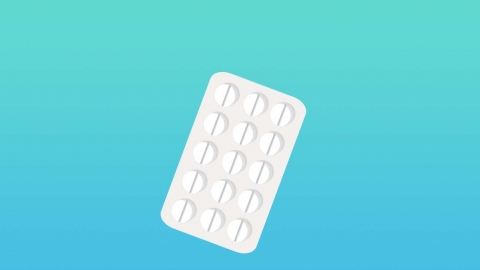What are the effects and side effects of Febuxostat tablets?
Generally, the effects of febuxostat tablets include inhibiting uric acid production, lowering serum uric acid levels, relieving joint inflammation, preventing tophi formation, and improving metabolic disturbances. Side effects may include abnormal liver function, rash, gastrointestinal discomfort, anemia, and others. A detailed analysis is as follows:

I. The Effects of Febuxostat Tablets
1. Inhibiting Uric Acid Production
Febuxostat tablets inhibit the activity of xanthine oxidase, blocking the metabolism of hypoxanthine and xanthine into uric acid. This reduces uric acid production at its source, thereby lowering uric acid levels in the blood.
2. Lowering Serum Uric Acid Concentration
Continuous use of febuxostat tablets can gradually reduce and maintain serum uric acid concentration within the target range, helping to decrease urate deposition in tissues such as the joints and kidneys, and preventing the occurrence of urate nephropathy.
3. Relieving Joint Inflammation
In patients with gout, febuxostat tablets reduce uric acid levels, alleviating irritation of the joints caused by urate crystals and relieving inflammatory symptoms such as redness, swelling, pain, and warmth in the joints, thus improving joint function.
4. Preventing Tophi Formation
Long-term hyperuricemia can easily lead to deposition of urate crystals in the joints and surrounding tissues, forming tophi. Febuxostat tablets effectively control uric acid levels, reducing the deposition of urate crystals and preventing the formation and enlargement of tophi, thus protecting the joints and surrounding tissues.
5. Improving Metabolic Disturbances
Reducing uric acid levels with febuxostat helps improve overall metabolic disturbances. It has positive therapeutic significance for patients with multiple metabolic abnormalities and can lower the risk of complications such as cardiovascular diseases.
II. Side Effects of Febuxostat Tablets
1. Abnormal Liver Function
Some patients may experience elevated liver function indicators, such as increased alanine aminotransferase (ALT) and aspartate aminotransferase (AST), after taking febuxostat tablets. Symptoms may include fatigue, loss of appetite, and jaundice. Severe cases may progress to drug-induced liver injury.
2. Rash
Skin allergic reactions may occur, manifesting as rash and itching. Rashes can vary in appearance, including erythema, papules, and maculopapular lesions, with varying severity. Some patients may experience disrupted sleep and interference with daily activities due to itching.
3. Gastrointestinal Discomfort
Common symptoms include nausea, vomiting, diarrhea, and abdominal pain. These reactions may affect the patient's appetite and digestive function, leading to poor nutrient absorption, which in turn affects health and quality of life.
4. Anemia
Febuxostat tablets may suppress bone marrow hematopoietic function, reducing red blood cell production and causing anemia. Patients may experience symptoms such as pallor, dizziness, and palpitations, which affect oxygen supply and normal metabolism in the body.
5. Joint Pain
In the initial phase of using febuxostat tablets, a rapid decrease in serum uric acid levels may cause dissolution of urate crystals within the joints, triggering gouty arthritis attacks and exacerbating joint pain. This is more common within the first few weeks of treatment.
During the use of febuxostat tablets, regular monitoring of liver function, blood routine, and serum uric acid levels is necessary. It is generally recommended to perform tests at one month and three months after starting treatment, followed by checks every 3–6 months depending on the situation. If abnormal liver function indicators or symptoms such as anemia occur, prompt medical attention should be sought to adjust medication or implement appropriate treatment measures.







